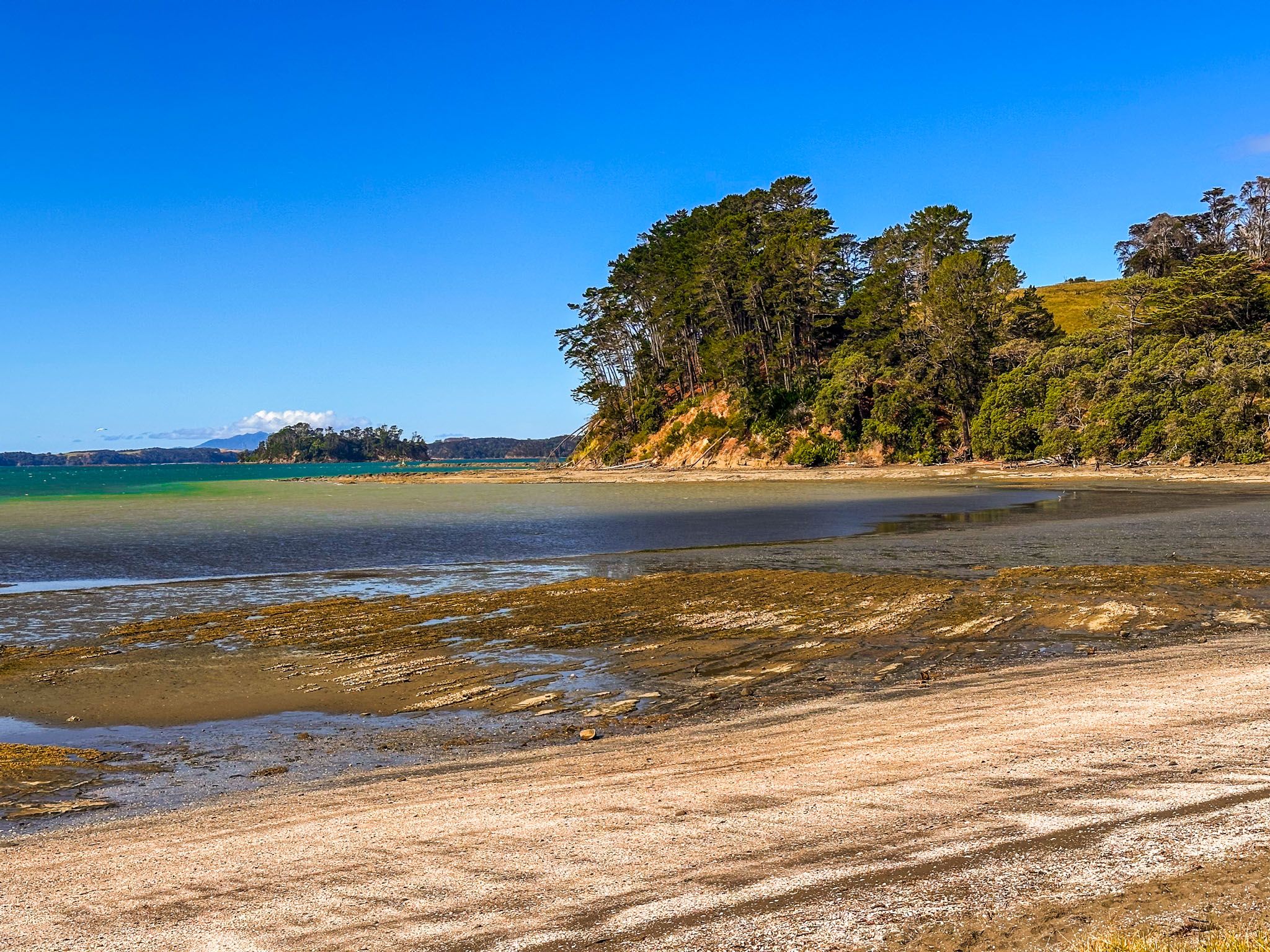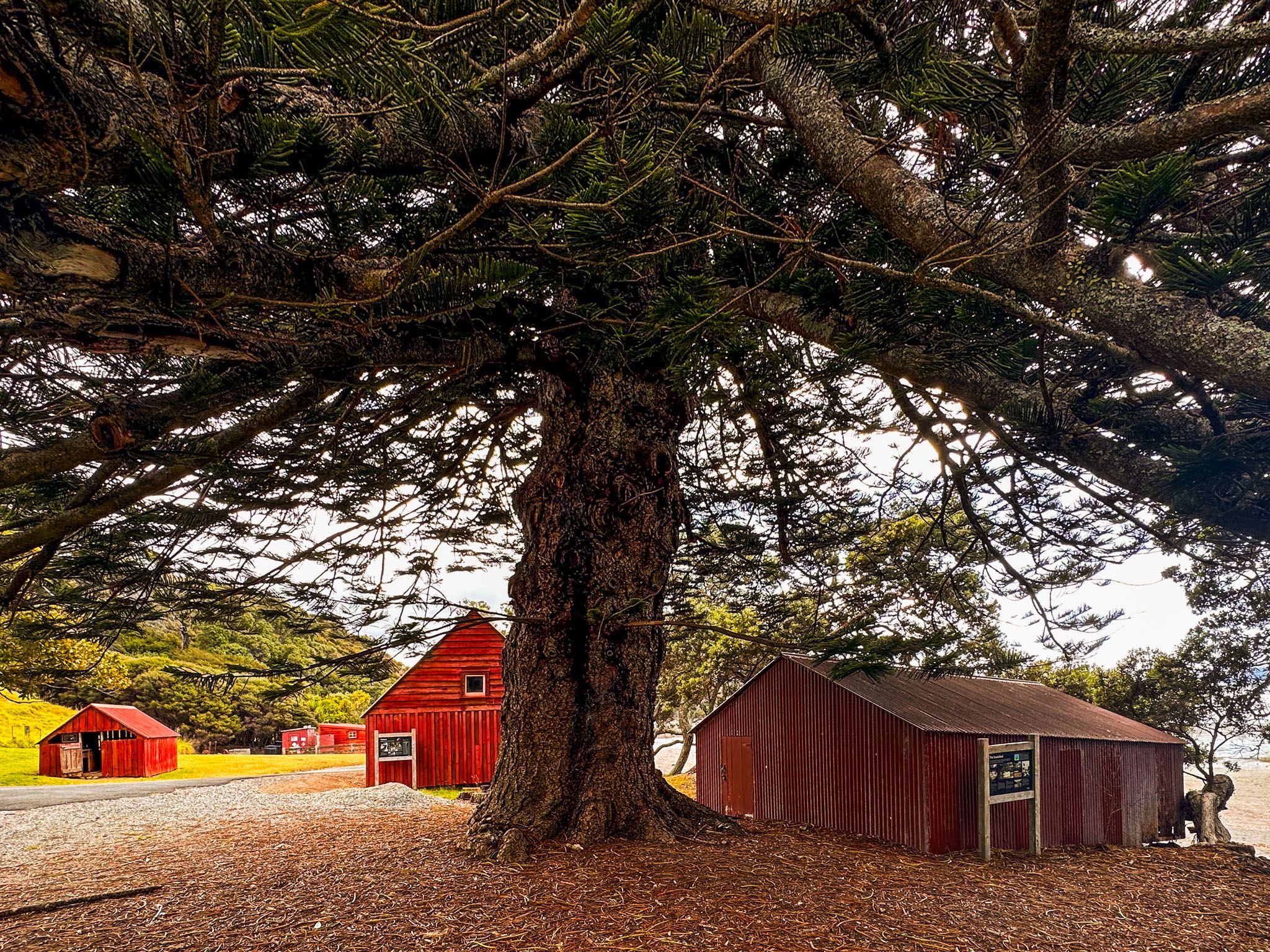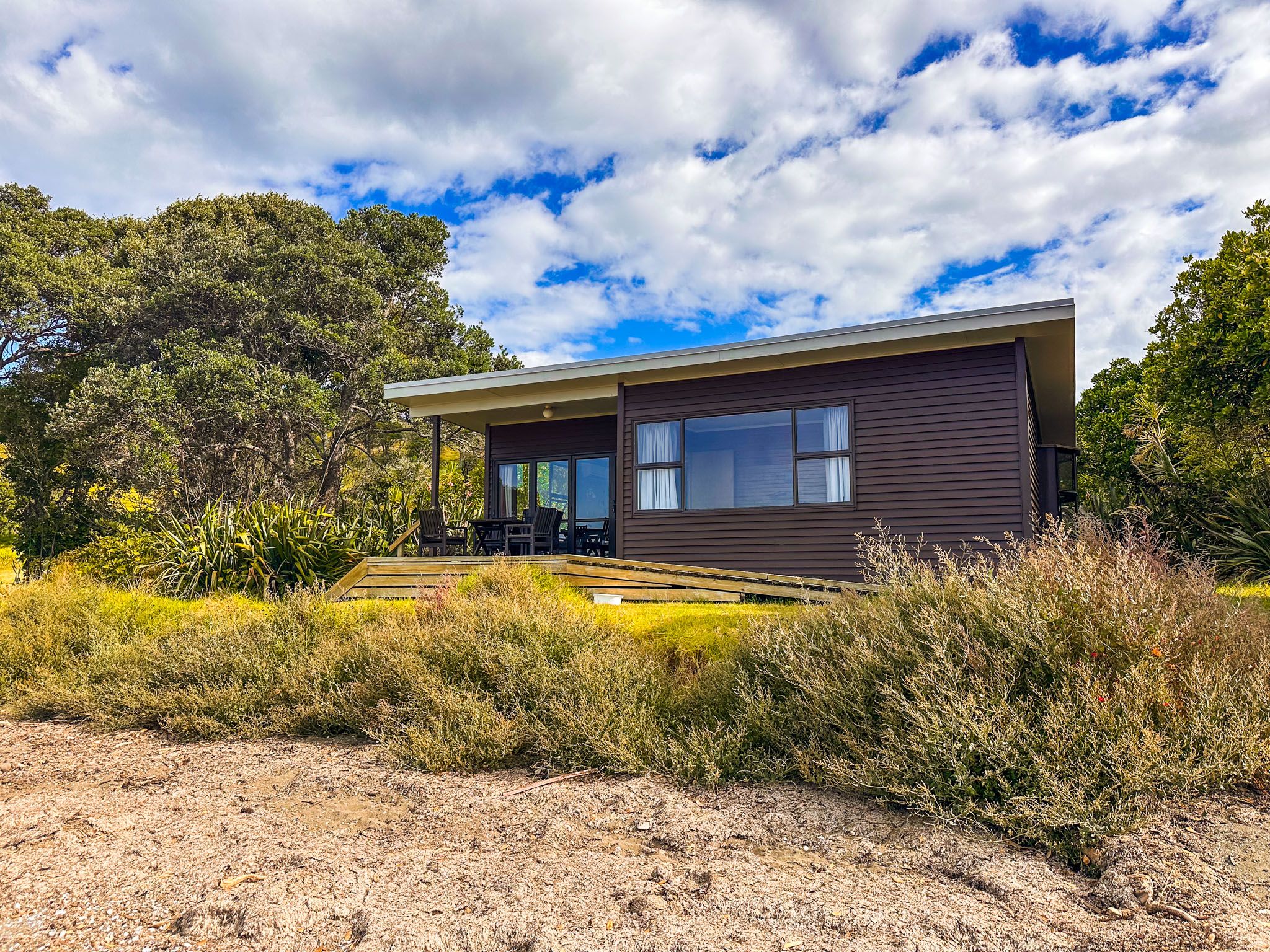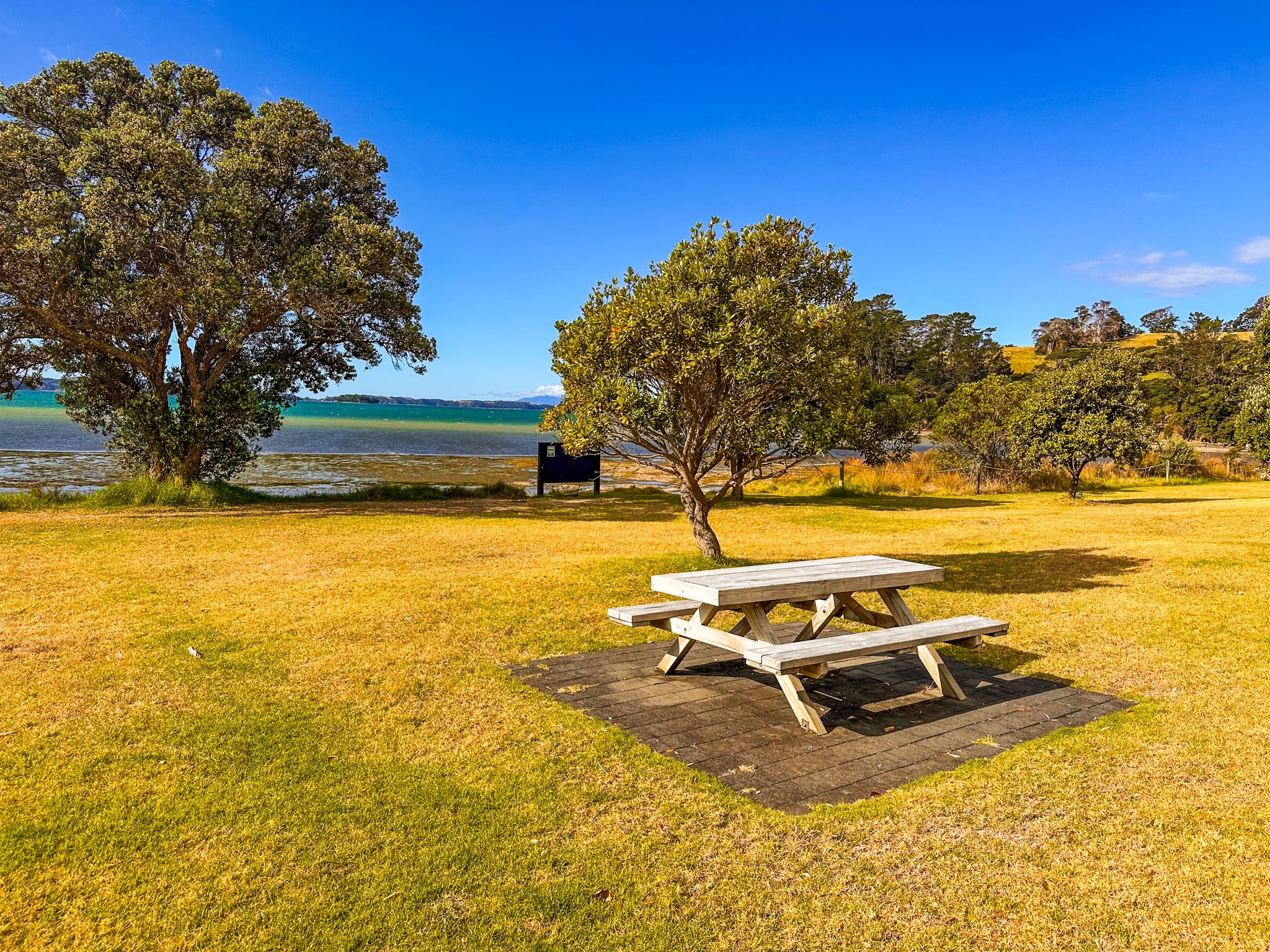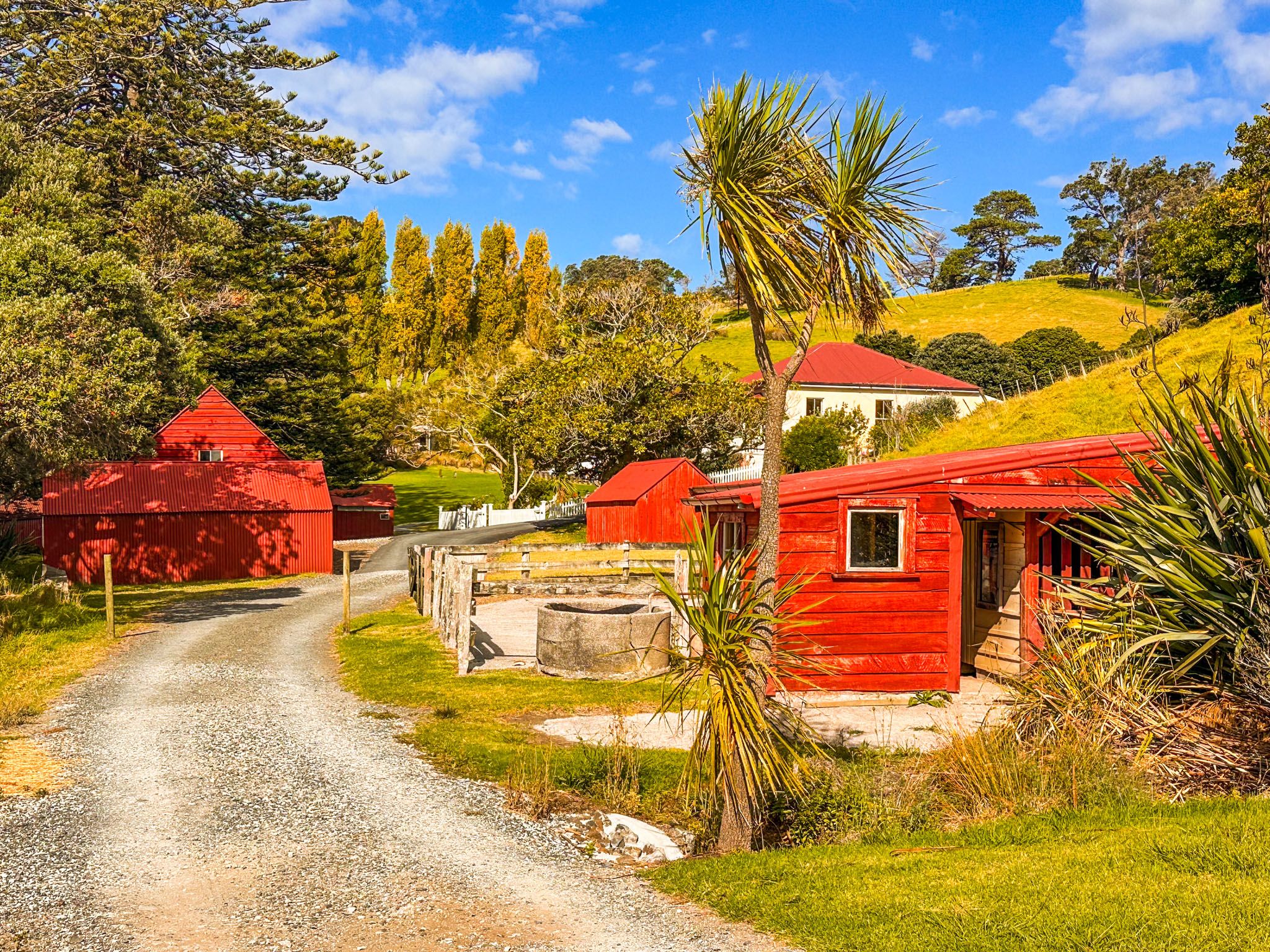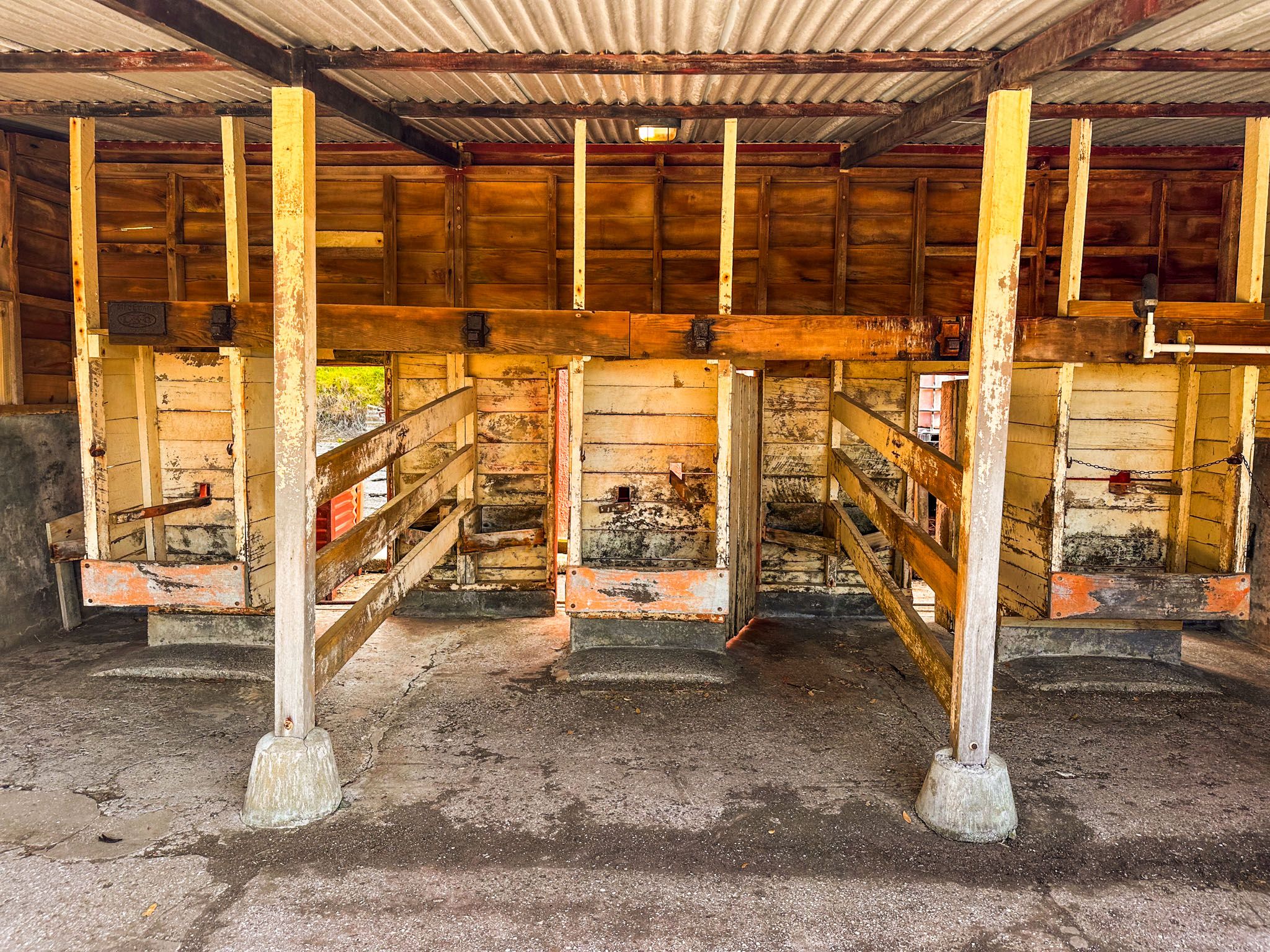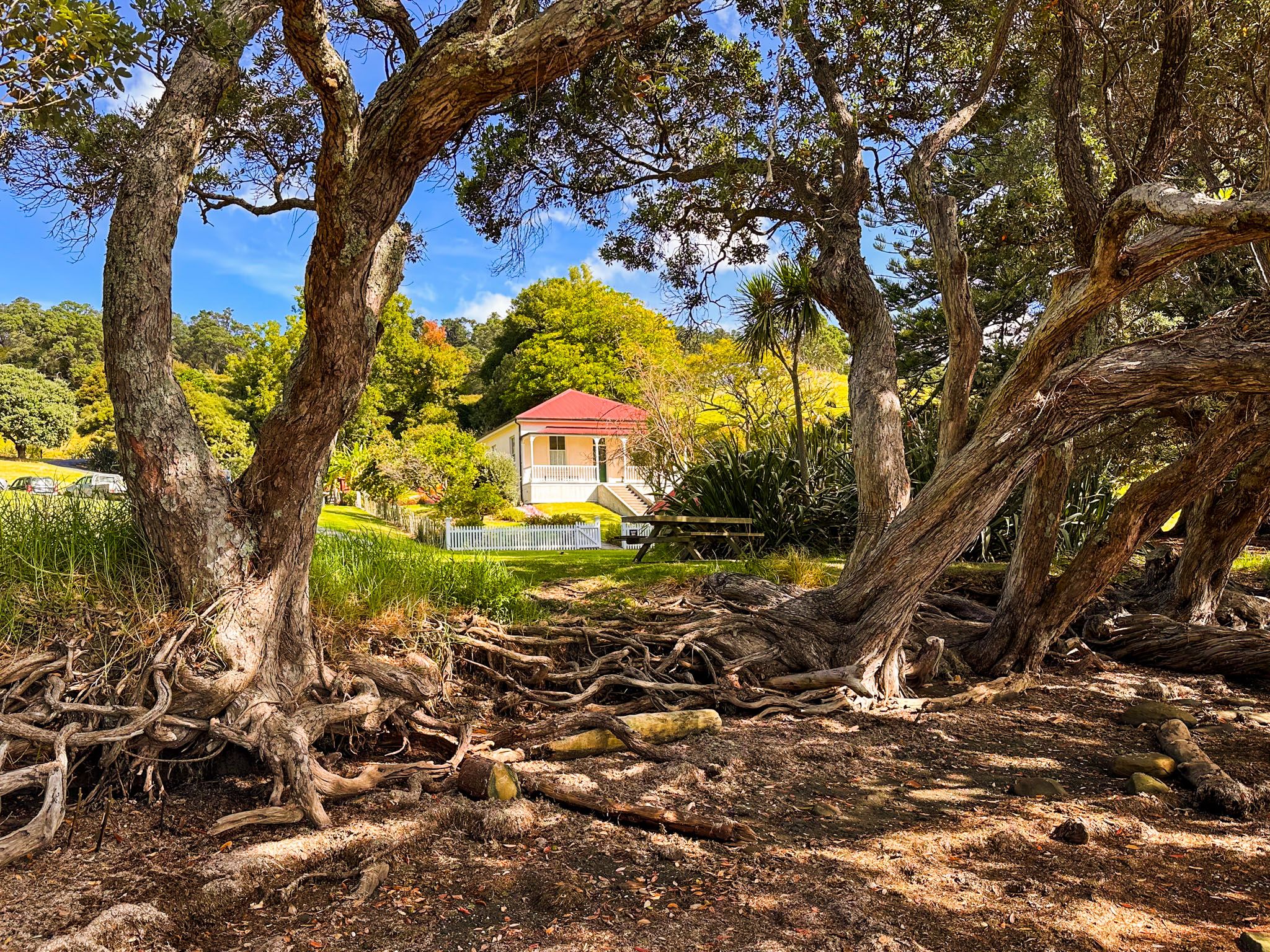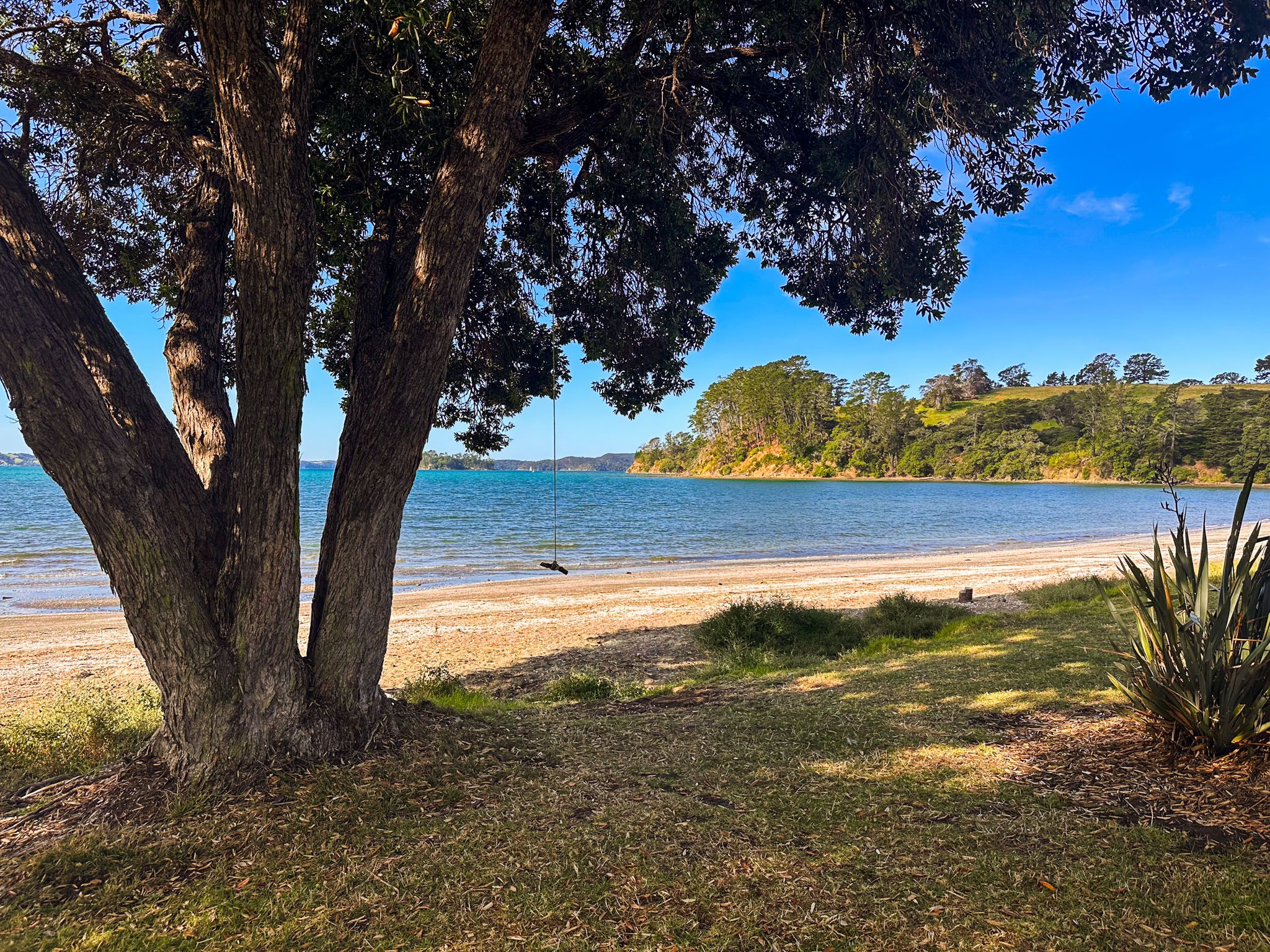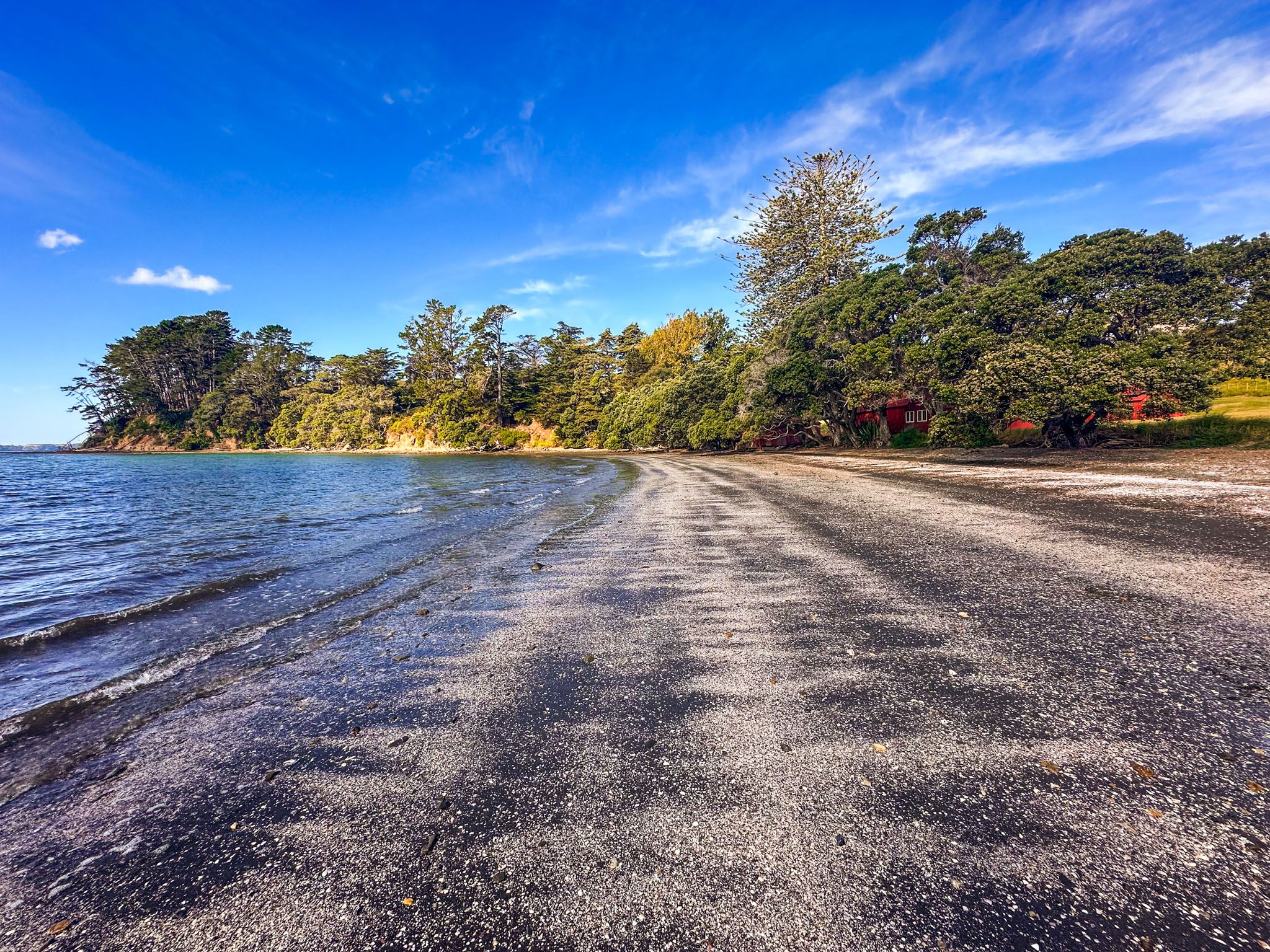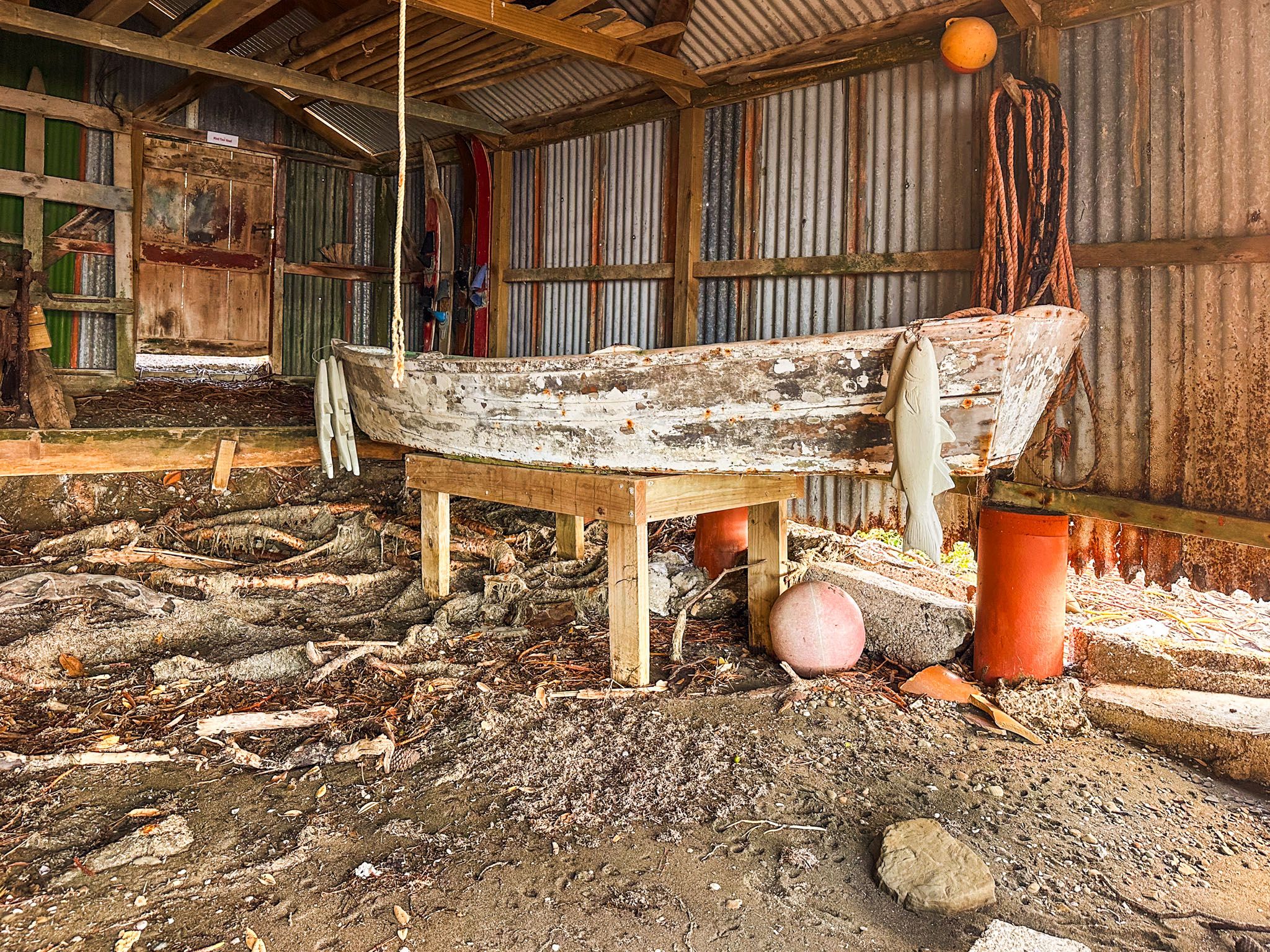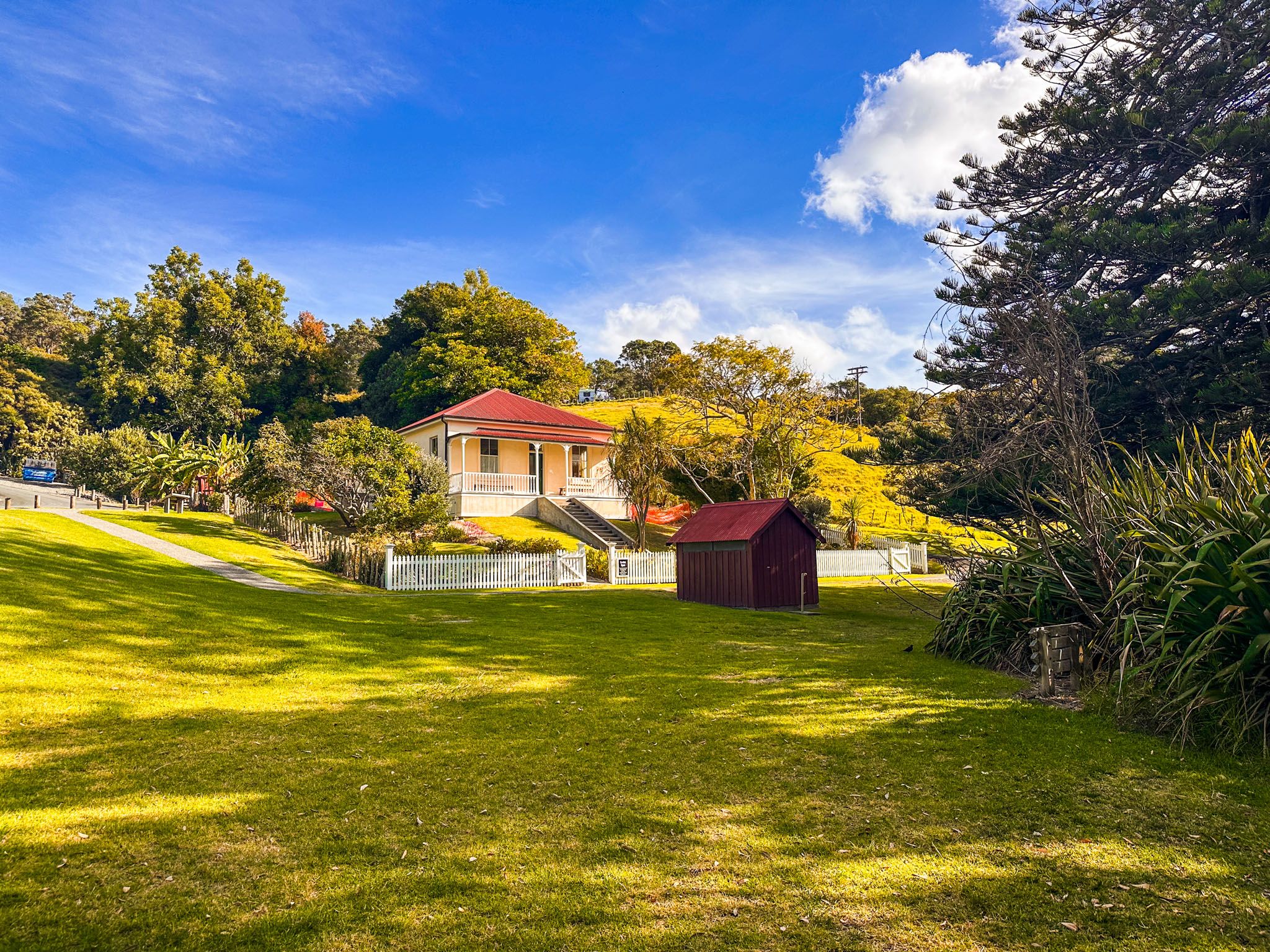Exploring Scandretts Bay: A Blend of History and Natural Beauty
Scandretts Bay is the heart of Scandretts Regional Park, located on the Mahurangi Peninsula. This area uniquely combines historical architecture with a 400-metre stretch of beach. Mullet Point lies to the east, while an unnamed point marks the western boundary. The bay is easily accessible via Scandrett Road, which branches off from Martins Bay Road, leading directly to the main car park near the historic Scandrett family homestead.
A Walk Through History and Nature
Behind the beach, a grassy reserve provides a scenic backdrop, with a metal road leading to three baches available for rent at the bay's western end. You can stroll along both the reserve and the beach. A track at the west end of the reserve takes you to a lookout point, offering views from the western tip of the beach. The reserve is bordered by a section of regrowth native forest. For those interested in a longer walk, three interconnected tracks—the Kawau Bay, Mullet Point and Orchard Tracks—offer a two-hour loop around the park's coastal edge.
Historical Homestead and Farm Buildings
The Scandrett family homestead, constructed from concrete around 1885, stands at the bay's eastern end, just 50 metres from the beach. Surrounded by a garden, the homestead features informational panels detailing its history and the park's development. Between the homestead and the beach, several farm buildings and a boat shed can be found. These include a barn, milking shed, calf shed (formerly a hen house), implement shed, dairy, and cream sheds. Initially, the farm was accessible only by boat, with road access developed in the 1930s, explaining the buildings' proximity to the beach. Each structure is accompanied by panels and historical photos of the Scandrett family.
Beach Activities and Scenery
The beach at Scandretts Bay is particularly appealing at high tide, with pōhutukawa trees lining the high-tide mark where the grassy reserve meets the sand. However, as the tide recedes, the beach becomes muddier and rockier in places. Swimming is safe, especially at high tide. At low tide, you can easily walk below the cliffs to Mullet Point or around the western point of the beach.
Getting to Scandretts Bay
To reach Scandretts Bay, take Scandrett Road from Martins Bay Road, which leads directly to the main car park at the eastern end of the bay. This location is ideal for exploring the historical and natural attractions of Scandretts Regional Park. Nearby, you can also visit other scenic spots on the Mahurangi Peninsula.
